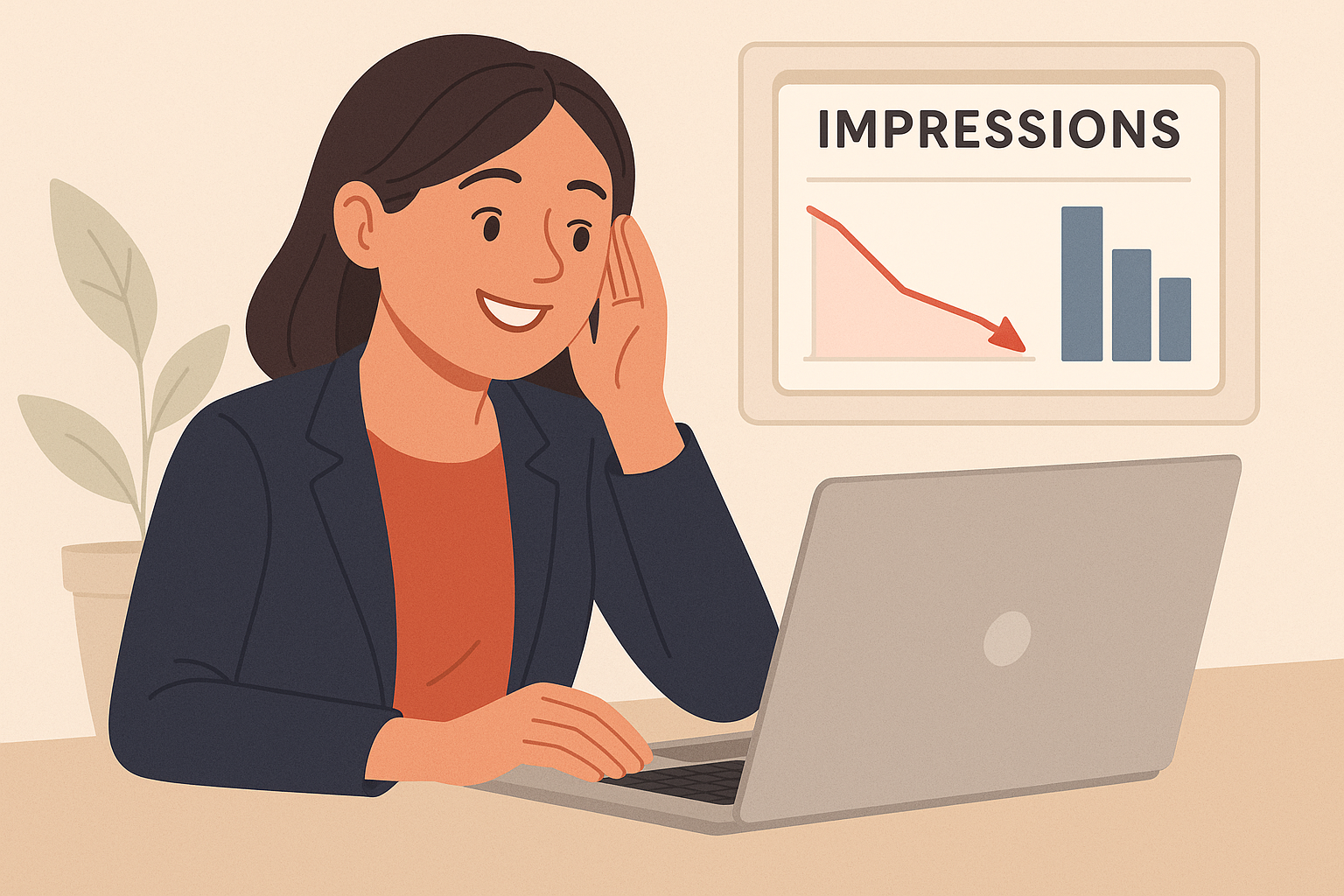Beyond Impressions: The New Metrics of PR Success in an AI-Driven World
The public relations industry is experiencing a seismic shift. Google's algorithm updates and the rise of AI-powered content consumption have fundamentally altered how publishers approach content strategy, and consequently, we need to alter how we measure PR success. Yes, it will be challenging. But this shift is overwhelmingly positive, even exciting. It is forcing the industry to move beyond "vanity metrics" like Unique Visitors per Month (UVM) that rarely translate to actual views or targeted audience reach. Simply due to a lack of accurate alternatives to demonstrate activity and scale, these metrics were once considered "good enough”. For agencies and brands still relying on these outdated measures, it's time for a measurement makeover.
At Comm Oddities, we are focusing on ways to recalibrate measurement systems using the new tech available to us through AI to show more concrete evidence of the value of PR efforts and our abilities to shape brand awareness, share of voice, and sentiment.
The Great Syndication Decline
Gone are the days when content syndication was a publisher's best friend. Google's algorithm changes have stripped away the SEO value that once made syndicated content a cornerstone of digital publishing strategies. Many publishers have responded by dramatically reducing syndication practices, focusing instead on creating original content optimized for Google Discover rather than traditional search engine results pages (SERP).
This shift has created a ripple effect across the media landscape. Where brands once celebrated dozens of syndicated pickups from a single story, those numbers have plummeted, not because the story lacks value, but because the entire ecosystem has evolved.
For agencies and brands that historically use impression-based insights for end of month reporting, this is the optimal time to reassess and create a scorecard that truly represents the work being done. What metrics really matter to each brand? Is it product inclusion in “best of” stories, being part of the AI overview or driving specific actions? For some, UVM may still carry weight in the transition. But it’s crucial to dig in deep with your clients to define what success looks like in this new era.
The Metrics Paradox: The Zero Click Phenomenon
Industry-wide data reveals a striking paradox: while UVMs for each website have decreased significantly, individual website visits have become exponentially more valuable. This isn't a contradiction, it's just the latest step in the evolution of digital marketing.
Publishers are abandoning the spray-and-pray approach of volume based content strategies. Instead, they are investing in fewer, higher-quality pieces that resonate more deeply with their target audiences. The result? Every visitor who lands on a publisher's site is more engaged, more likely to convert, and represents a higher-quality interaction with your brand.
According to SparkToro, more than 65% of Google searches today end without a click. So the value of each actual site visit has skyrocketed. This is a culmination of more informed visitors and traffic that are further down the sales funnel.
Enter GEO: The Future of Content Optimization
As Generative Engine Optimization (GEO) begins to replace traditional SEO strategies, we're witnessing a fundamental shift in how content gets discovered and consumed. AI tools are dramatically shortening the customer journey, enabling users to reach purchase decisions with fewer clicks than ever before.
This compression of the conversion funnel means every interaction carries more weight. When someone clicks through to read an article about your brand, they're not just casually browsing, they're actively seeking information that will inform their decision-making process.
What Leading PR Agencies Are Doing Right Now – And How Comm Oddities is Leading Change
Leading agencies aren't just adapting to these changes, they're getting ahead of them. Here's how the best in the business are repositioning their strategies:
1. Redefining Success Metrics
Smart agencies are moving beyond impression counts and syndication numbers. They are tracking a variety of metrics that can move the needle for clients. If you’re working with Comm Oddities, we are working to implement a customized scorecard for each and every client to ensure your PR hours are working hard for your bottom line. Here are just a few ways you can reinvent your scorecards:
Engagement quality scores based on time spent on page and interaction depth
Conversion attribution linking media coverage to actual business outcomes
Share of voice in AI-generated summaries and featured snippets (Tools like X Funnel can help you measure your AI GEO SOV)
Google Discover optimization results for client content
2. Building AI-First Media Strategies
Top agencies are developing content specifically designed for AI consumption:
Creating structured data that AI systems can easily parse and summarize
Developing quote banks and key messaging optimized for AI-generated responses
Building relationships with publishers who understand and optimize for GEO principles
Crafting narratives that perform well in AI-summarized formats
3. Focusing on Publisher Partnership Evolution
Rather than chasing volume, leading agencies are:
Developing deeper relationships with fewer, higher-quality publishers that reach each client’s target market
Understanding each outlet's Google Discover optimization strategy
Collaborating on content that aligns with publishers' new algorithmic goals
Creating exclusive, original content that can't be easily replicated or syndicated
4. Implementing Advanced Attribution Modeling
The best agencies are investing in sophisticated tracking that connects media coverage to business outcomes:
Multi-touch attribution models that account for shortened customer journeys
Brand lift studies that measure awareness and intent changes
Social listening tools that track conversation quality, not just quantity
Integration with client CRM systems and website analytics to track lead generation from specific coverage
5. Educating Clients on the New Reality
Top agencies are proactively communicating these industry changes:
Providing detailed context in monthly reports about metric fluctuations
Offering training sessions on new measurement frameworks
Creating custom dashboards that highlight quality over quantity metrics
Developing case studies that demonstrate ROI despite lower impression counts
The Bottom Line: Quality Over Quantity Will Win
This change in the media landscape is not a temporary adjustment. Publishers are optimizing for engagement over reach, AI systems are curating content more selectively, and audiences are making faster, more informed decisions.
For PR professionals, this means abandoning outdated metrics and embracing a more sophisticated understanding of media value. The coverage that matters most is not the piece that gets syndicated across dozens of sites, it's the one that reaches the right audience at the right moment in their decision-making journey.
As we navigate this ever-changing landscape, successful PR agencies will be those that help clients understand that fewer, higher-quality placements in AI-optimized content environments deliver far more value than the volume-based strategies of the past.
The future of PR is not about gaming algorithms or chasing impression numbers. It's about creating meaningful connections between brands and audiences in an increasingly intelligent, curated media ecosystem. At Comm Oddities, we are committed to leading the change, ensuring our clients not only adapt but thrive in this evolving landscape.

